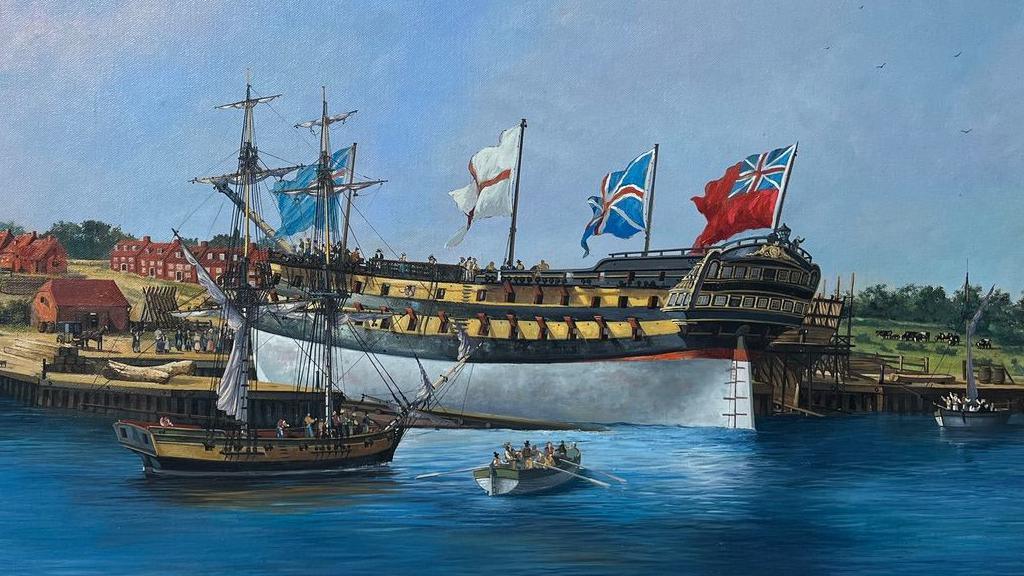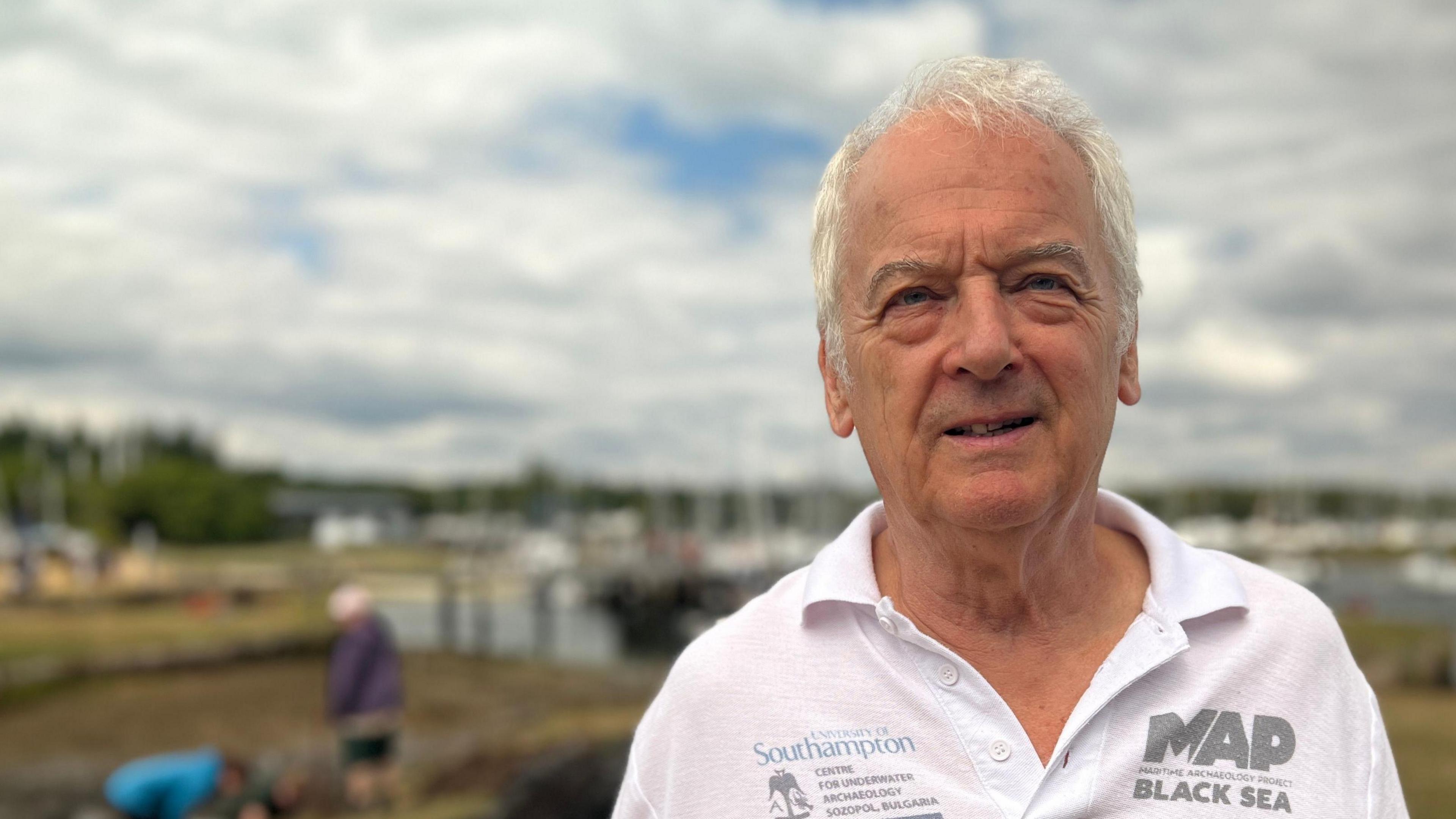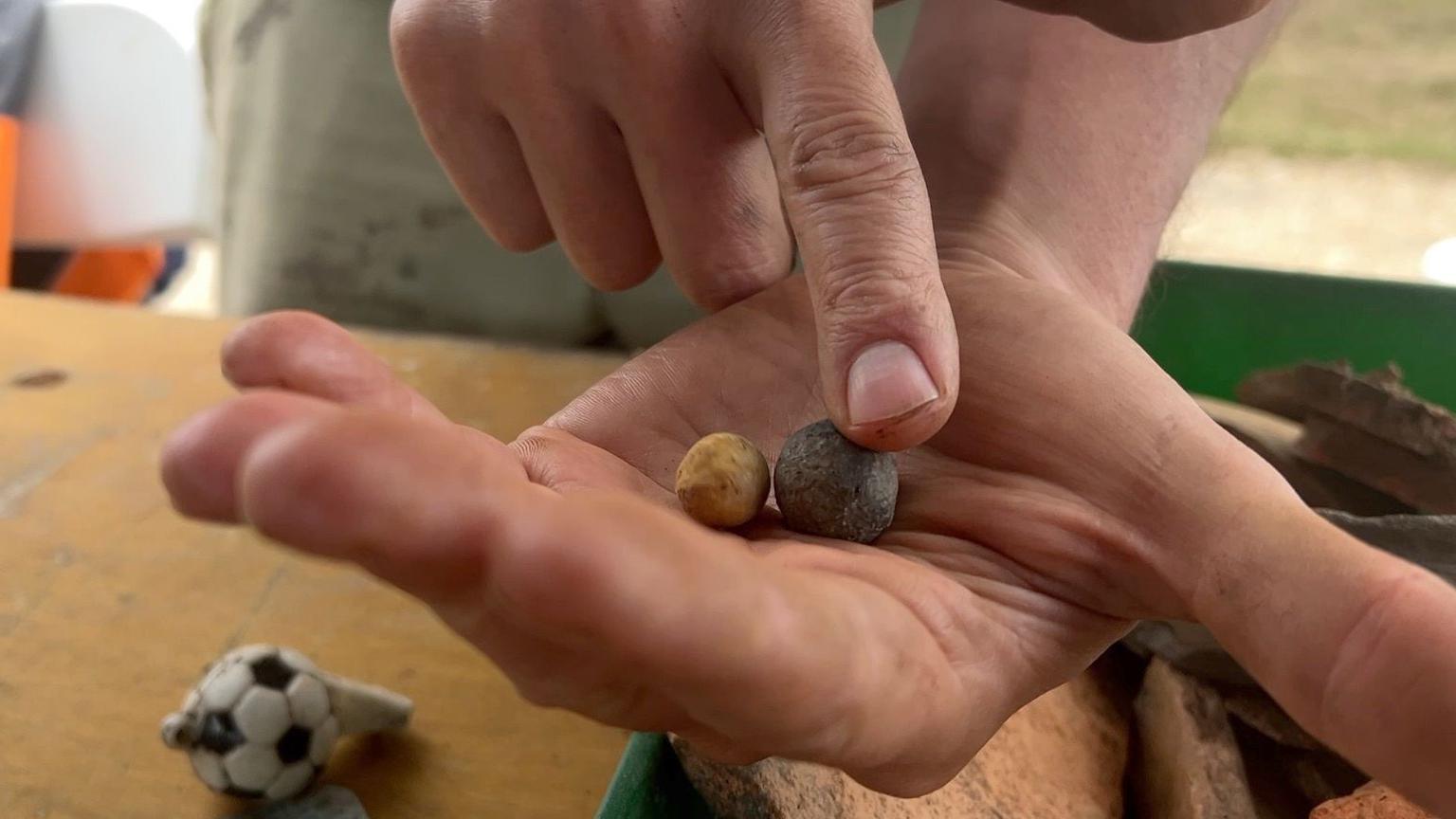Dig reveals slipway where Nelson's ships were made

HMS Agamemnon, known as Nelson's favourite ship, took part in the Battle of Trafalgar and was one of the ships built at Buckler's Hard
- Published
A slipway from the 18th Century where ships for Lord Nelson's fleet were built and launched has been excavated by archaeologists.
The team from the University of Southampton said it was the first time one from this period had been totally uncovered in the UK.
Buckler's Hard, the small hamlet in the New Forest where the slipway is located, was once home to one of the busiest private shipyards of the 1700s.
The researchers said they hoped the findings would help improve their understanding of shipbuilding techniques and infrastructure during the period.

The slipway is the first of its era to be fully revealed in the UK
The dig was supported by the newly formed Buckler's Hard Shipyard Trust, a conservation charity.
A total of 55 wooden warships were built at Buckler's Hard for the Royal Navy in the 1700s, some of which were comparable in size to HMS Victory.
"No other private yard built as many ships for the navy during this period," said Prof Jon Adams, director of the university's Centre for Maritime Archaeology.

Prof Jon Adams said Buckler's Hard provided a unique look into the shipbuilding techniques and infrastructure of the time
Unlike the slipway at Buckler's Hard, most slipways from the 18th Century are now buried under concrete.
Prof Adams said that made this one uniquely suited for learning about traditional shipbuilding.
"The only opportunity is a place like this where you can actually see the whole of the whole of the infrastructure and the logistical structures needed to build ships of that size," he said.

The team also found some historical curiosities, such as musket balls and fastening nails from the 1700s
One of the most famous ships built at the site was HMS Agamemnon, which took part in the Battle of Trafalgar and was known as Lord Nelson's "favourite".
There are now plans to place a replica of the vessel on the end of the slipway as it would have looked under construction.
A 3D model of the slipway has also been created to aid research, and the site will be covered with a new layer of soil and topped with timbers in the style of the 1700s.
"The visitor would then come into the village and actually see what the yard might have looked like," said Prof Adams.
You can follow BBC Hampshire & Isle of Wight on Facebook, external, X (Twitter), external, or Instagram, external.
More stories like this
City's monuments preserved 'for future generations'
- Published22 March 2024
Archaeologists unearth secrets of medieval abbey
- Published5 August
Historic city's original boundary excavated
- Published10 October 2024
Get in touch
Do you have a story BBC Hampshire & Isle of Wight should cover?